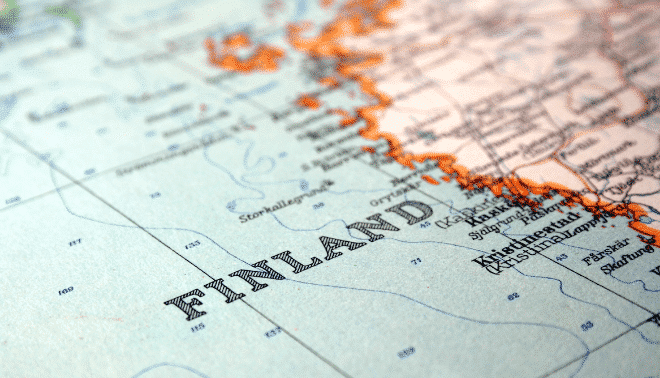
If you’re among the half-million Americans with Finnish ancestry, your research path—like Finland—lies with the Baltic states and Russia on one side and Sweden on the other.
Finland was a Swedish province and then grand duchy for almost six centuries until it became a grand duchy of Russia in 1809. Finland declared independence in 1917; after a short civil war, it became a presidential republic in 1919. Though it was largely agrarian until the mid-20th century, it’s caught up quickly, now regularly nabbing top spots in quality-of-life country rankings. So there’s no reason to let Sweden and Russia overshadow your Finnish ancestors’ roots—you’ll find plenty of material to start your genealogical engines.
The Finnish language is related to Baltic tongues, including Estonian, but most official records before 1863 are in Swedish. (Swedish remains an official language, and is spoken by 5.5 percent of the population.)
Until the late 19th century, surnames in western Finland typically changed with each generation, following the patronymic system as in Sweden—adding -son or -dotter to the father’s name (sometimes translated to the Finnish -poika for a son or -tytär for a daughter). Eastern Finland, however, was among the first places in Europe to adopt permanent surnames. You’ll also occasionally find farm names, as well as soldier names adopted during military service.
In genealogical records, Finland most resembles other Scandinavian countries. The most important records are those kept by the state Lutheran Church beginning in 1686 (kirkonkirjat; kyrkoböcker in Swedish). These include births and baptisms, usually with detailed information about the parents (except often giving short shrift to the mother until the late 1700s), marriages, deaths and burials, confirmations and communion records, as well as records of comings and goings in the parish. Some parishes issued “moving certificates” to families beginning in the late 1700s, which were replaced by official arrival and removal records in the 1800s.
The Family History Library (FHL) has microfilmed Finnish parish records from the time they began to the 1860s, sometimes to 1900. Many have been extracted in the International Genealogical Index, available on FamilySearch. (Locate a Family History Center near you here.) The Genealogical Society of Finland’s ongoing HisKi Project is transcribing parish records into a free, searchable database. To see whether your ancestors’ parish has been added yet, check here.
Even before church records, Finland began keeping a sort of census called henkikirjat (mantalslängder in Swedish). Maintained for tax purposes, henkikirjat date to 1634, when all people over age 12 were enumerated, except some nobles, soldiers, large landholders and the indigent. From 1655 on, most people ages 15 to 63, plus heads of household over 63, were covered. Exceptions (which included nobility) were eliminated in 1765. The FHL catalogs these records by county under the census heading.
Before you can find your ancestors in Finland, you need to know where in the country they came from. Fortunately, Finnish passport records from the mid-1800s on include the person’s home parish. The FHL has microfilmed passport records from their inception, about 1820, through 1920. Finland’s Institute of Migration has a searchable online database of these and other emigration records, such as steamship passenger lists, totaling 550,000 entries to date. It’s also home to an online library of 9,000 publications about Finnish emigration, a database of 12,000 photos, and the Migration and Ethnicity Research Network, a database of 450 researchers and others interested in migration and ethnicity research in Finland.
Keep in mind that your Finnish ancestors may have migrated through ports in other countries, particularly Göteborg, Malmö and Stockholm in Sweden and Trondheim in Norway. The FHL has microfilmed records of all four ports. The FHL also has a Finland Research Outline, where you’ll find even more resources to rev up your research.
Click here to view a comprehensive list of web and print resources, as well as our English to Finnish genealogy glossary, to ease the exploration of your Finnish heritage.
A version of this article appeared in the the September 2010 issue of Family Tree Magazine.

